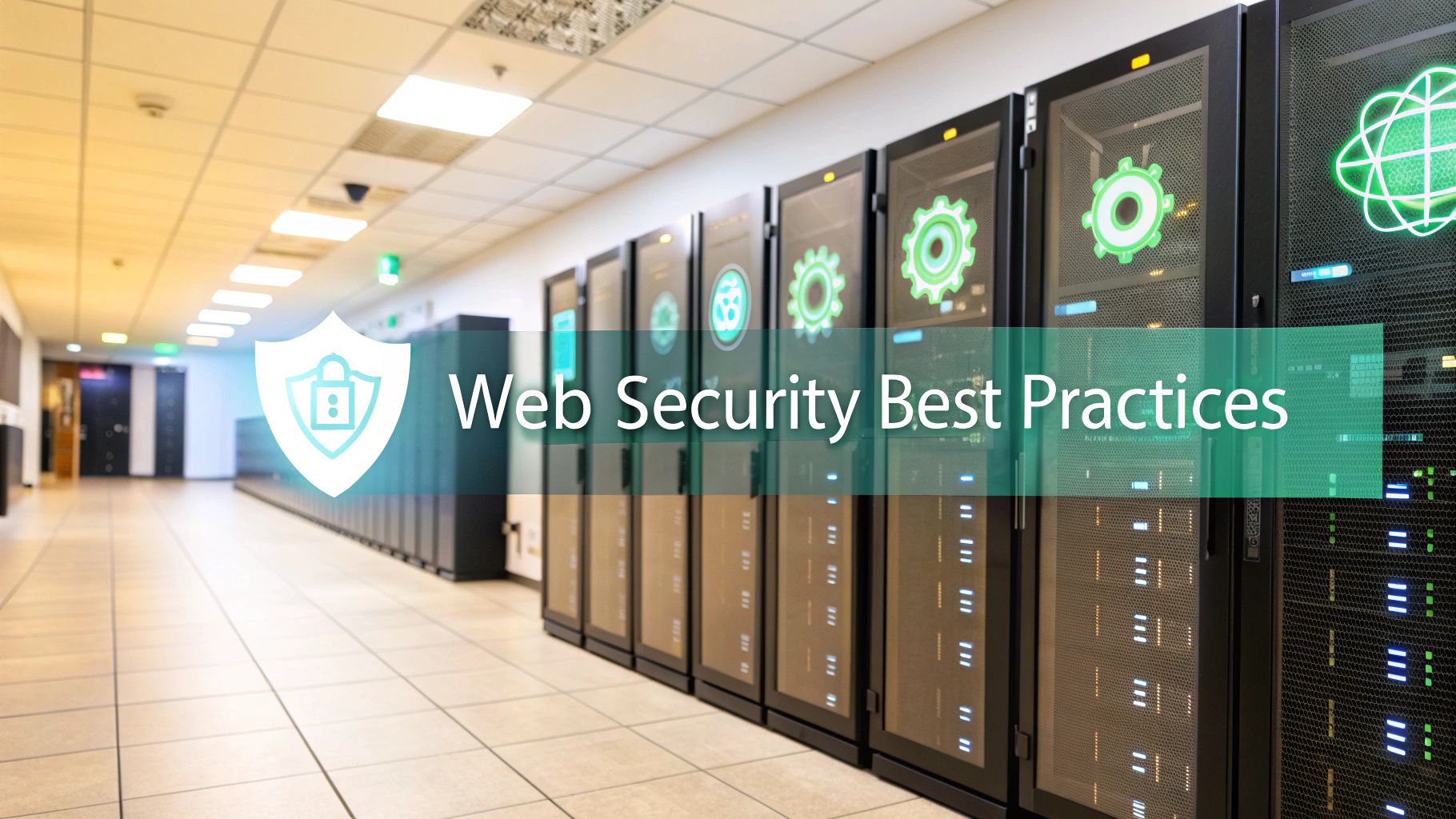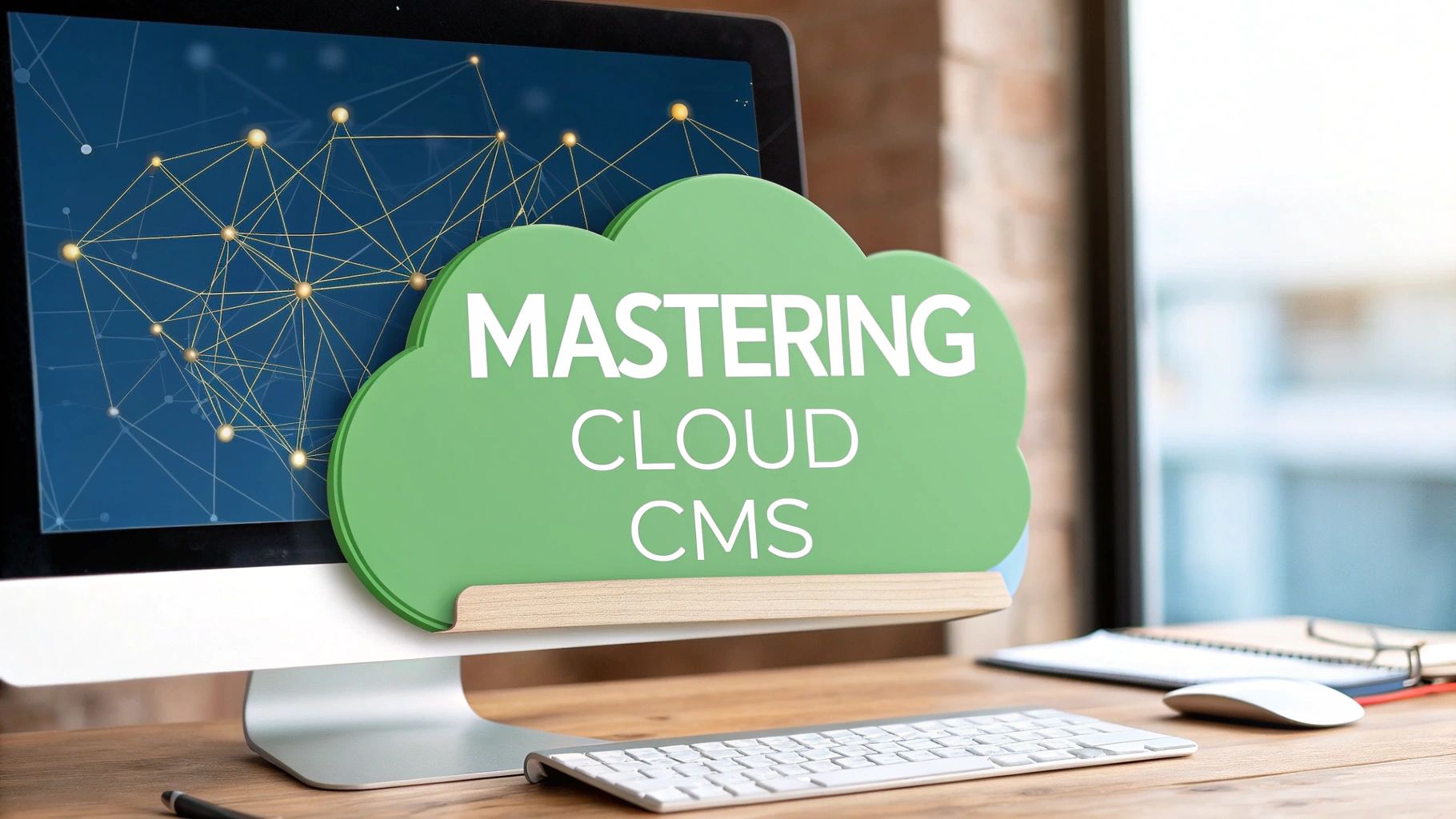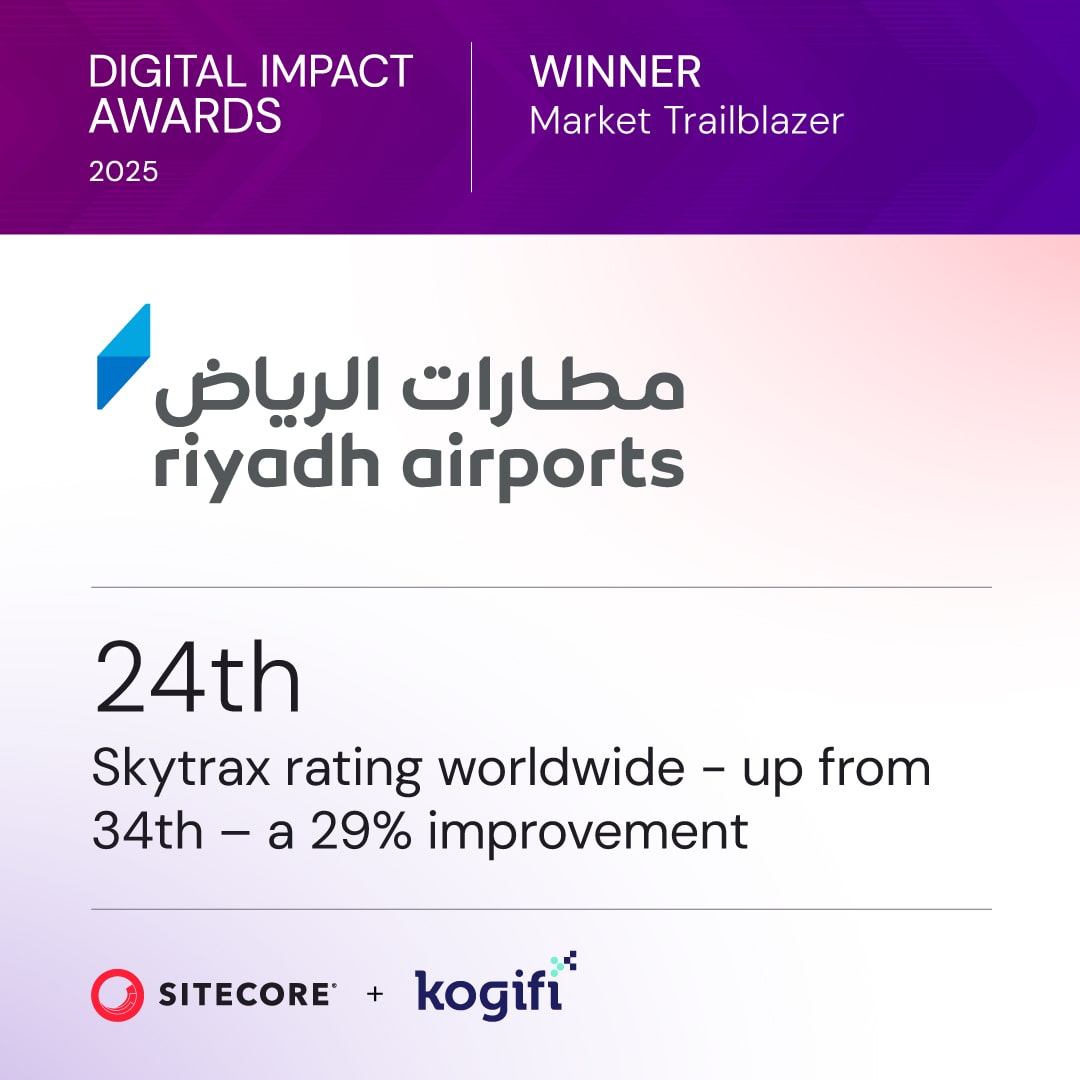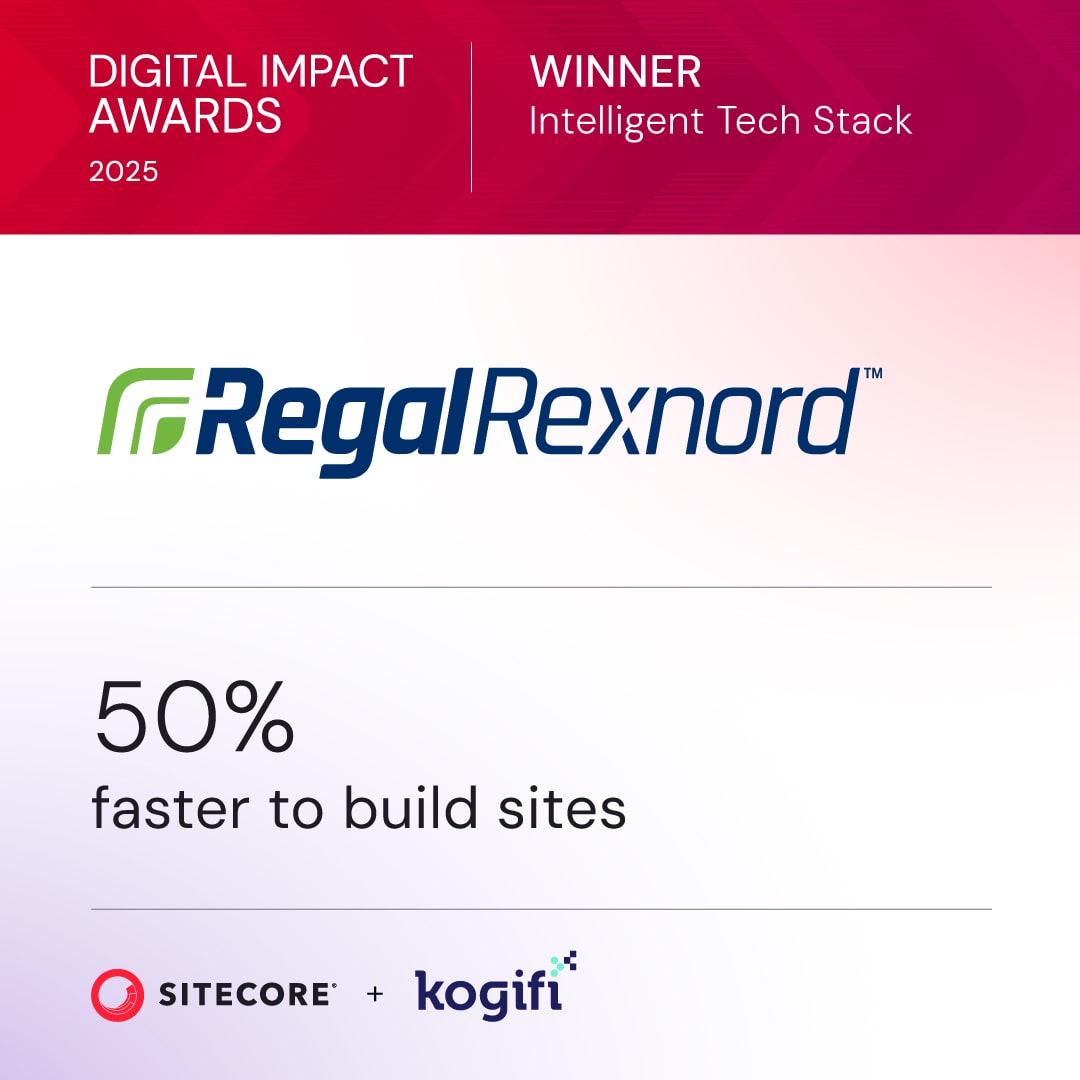In today's complex digital ecosystem, a reactive approach to security is a recipe for disaster. For enterprises running sophisticated Digital Experience Platforms (DXPs) like Sitecore or collaborative hubs like SharePoint, the stakes are exceptionally high. A breach isn't just a technical issue; it's a direct threat to brand trust, customer data, and regulatory compliance, potentially costing millions in damages and lost revenue.
This guide moves beyond generic advice to deliver a detailed breakdown of 10 mission-critical website security best practices. Each point is tailored for high-stakes environments, providing actionable insights derived from deep expertise in securing enterprise-grade Sitecore and SharePoint platforms. We will cover the entire lifecycle of your IT infrastructure, which must also include processes for secure server decommissioning to prevent data remnants from becoming future vulnerabilities.
Prepare to dive into specific strategies for strengthening authentication, implementing robust firewalls, and establishing comprehensive monitoring. This listicle is designed to help you transform your security posture from a simple checklist item into a core strategic advantage, safeguarding your digital assets effectively.
1. Implement HTTPS/SSL/TLS Encryption
Implementing robust encryption through HTTPS (Hypertext Transfer Protocol Secure) is a foundational element of modern website security best practices. This protocol uses an SSL/TLS (Secure Sockets Layer/Transport Layer Security) certificate to establish an encrypted link between a user's browser and your web server. This digital "handshake" ensures that all data passed between the two, such as login credentials, personal information, or transaction details, remains private and integral, protected from eavesdropping or man-in-the-middle attacks.
For a DXP like Sitecore, which often handles sensitive customer data, personalization information, and commerce transactions, HTTPS is non-negotiable. It protects the integrity of the customer experience managed through Sitecore Experience Platform (XP) and builds essential user trust. Modern browsers actively flag non-encrypted HTTP sites as "Not Secure," which can deter visitors and negatively impact brand perception. In SharePoint environments, encryption is equally critical for protecting sensitive corporate documents and collaboration data.

Actionable Implementation Steps
To effectively deploy encryption, especially within a complex DXP environment, a multi-faceted approach is required.
- Automate Certificate Management: Use services like Let's Encrypt for free, automated certificate issuance and renewal. For enterprise setups on Azure, leverage Azure Key Vault to securely store and manage your TLS/SSL certificates for Sitecore Content Delivery and Content Management instances.
- Enforce Universal Encryption: Configure your web server (e.g., IIS for Sitecore and SharePoint) to use URL Rewrite rules that issue a permanent
301 redirectfor all HTTP traffic to its HTTPS equivalent. This ensures no unencrypted connections are possible. - Implement HSTS: Add the HTTP Strict Transport Security (HSTS) header. This tells browsers to only communicate with your server over HTTPS, preventing protocol downgrade attacks.
- Secure All Resources: Eliminate "mixed content" warnings by ensuring all assets, including images from the Sitecore Media Library, scripts, and stylesheets, are loaded over HTTPS. This is critical for maintaining the green padlock in the browser address bar.
- Validate Configuration: Regularly use tools like the Qualys SSL Labs Server Test to analyze your configuration, identify weaknesses, and ensure you are following current security standards.
2. Regular Software Updates and Patch Management
Keeping all software components up-to-date is a critical pillar of any robust website security best practices strategy. This involves diligent patch management for the Sitecore platform itself, third-party modules from the marketplace, server software (Windows Server, IIS), and the underlying .NET Framework. Vulnerabilities are constantly discovered, and vendors release patches to close these security holes. Failing to apply these updates in a timely manner leaves a wide-open door for attackers.
For enterprise platforms like Sitecore, which integrate numerous components from the core platform to Sitecore Commerce and custom-developed modules, a disciplined approach to updates is non-negotiable. An outdated module or a vulnerability in an older version of the platform can expose sensitive customer data and undermine the entire digital experience. Proactive patch management transforms security from a reactive scramble into a controlled, predictable process, preventing exploits before they happen.
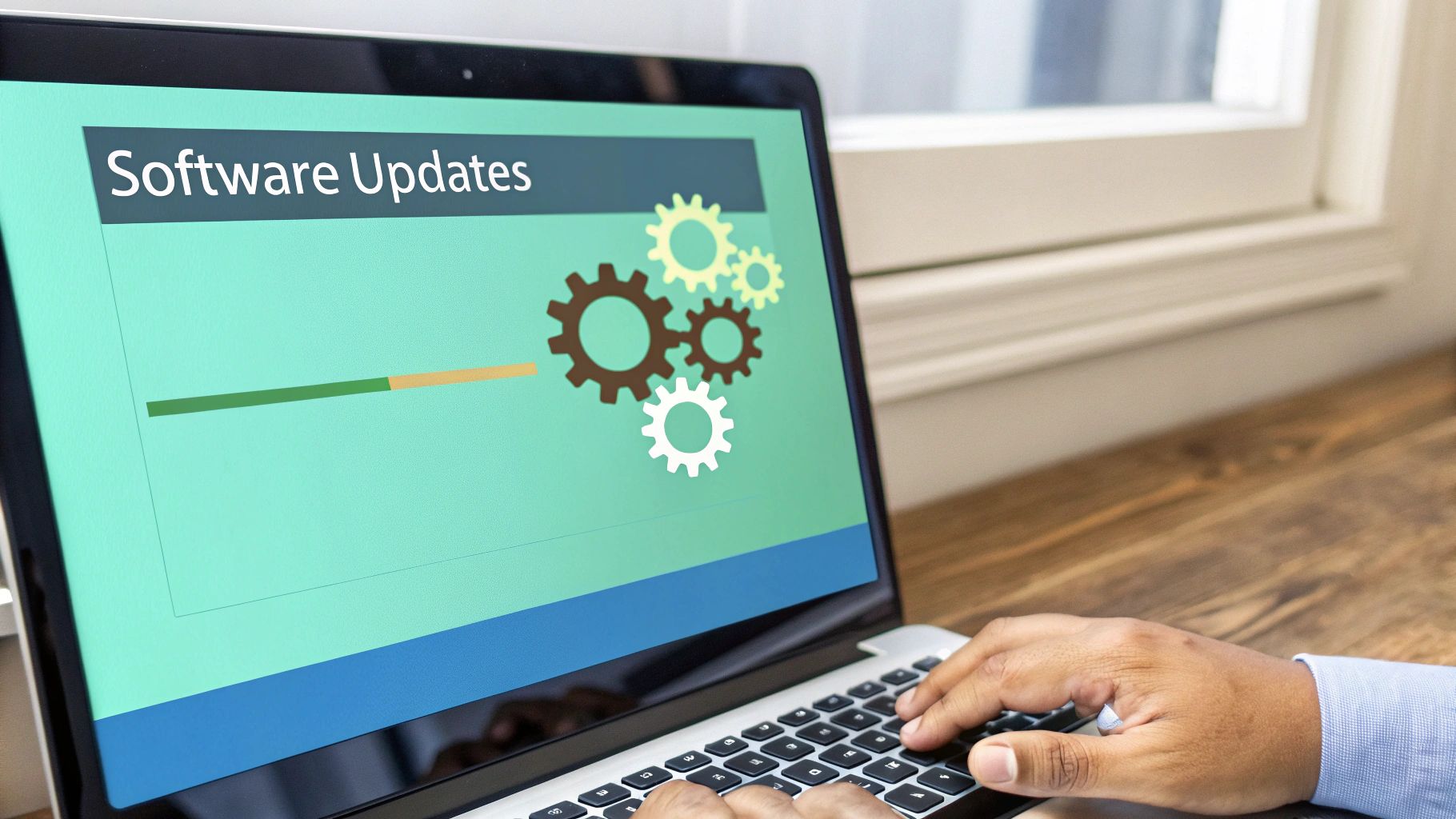
Actionable Implementation Steps
A systematic patch management policy is essential for maintaining the security integrity of a DXP like Sitecore or a collaboration platform like SharePoint.
- Establish a Staging Environment: Never apply major updates directly to your production environment. Use a dedicated staging server that mirrors your live setup to test all patches for compatibility and functionality, preventing unexpected downtime.
- Maintain a Component Inventory: Keep a detailed, up-to-date inventory of all software, including the Sitecore version, .NET version, and any installed modules or connectors. This allows you to quickly identify systems affected by a newly disclosed vulnerability.
- Subscribe to Security Bulletins: Follow official security feeds from your software vendors, such as the Sitecore Security Bulletins, to receive immediate notifications about new vulnerabilities and available patches.
- Schedule Regular Maintenance Windows: Designate specific, recurring times for applying and testing updates. This proactive scheduling ensures security is maintained without disrupting business operations. A comprehensive overview of the signs that an enterprise CMS needs an urgent upgrade can help justify these maintenance efforts.
- Remove Unused Components: Reduce your attack surface by completely uninstalling any themes, modules, or plugins that are no longer in use. An inactive Sitecore module can still contain a vulnerability that attackers can exploit.
3. Strong Authentication and Password Policies
Implementing robust authentication is a cornerstone of website security best practices, acting as the primary gatekeeper for sensitive systems and data. This involves enforcing stringent password policies and multi-factor authentication (MFA) to verify user identities, ensuring that only authorized individuals can access restricted areas of your website or DXP. Strong authentication is the first line of defense against common threats like brute-force attacks and credential stuffing.
For enterprise platforms like Sitecore, which manage valuable customer data and core business logic, weak authentication is a significant risk. The Sitecore Identity server, built on IdentityServer4, provides a centralized authentication mechanism that can be fortified with these practices. Protecting access to the Content Management environment or user accounts in a Sitecore Commerce setup is critical for preventing data breaches and maintaining system integrity. Similarly, securing SharePoint requires integrating with robust identity providers like Azure Active Directory.
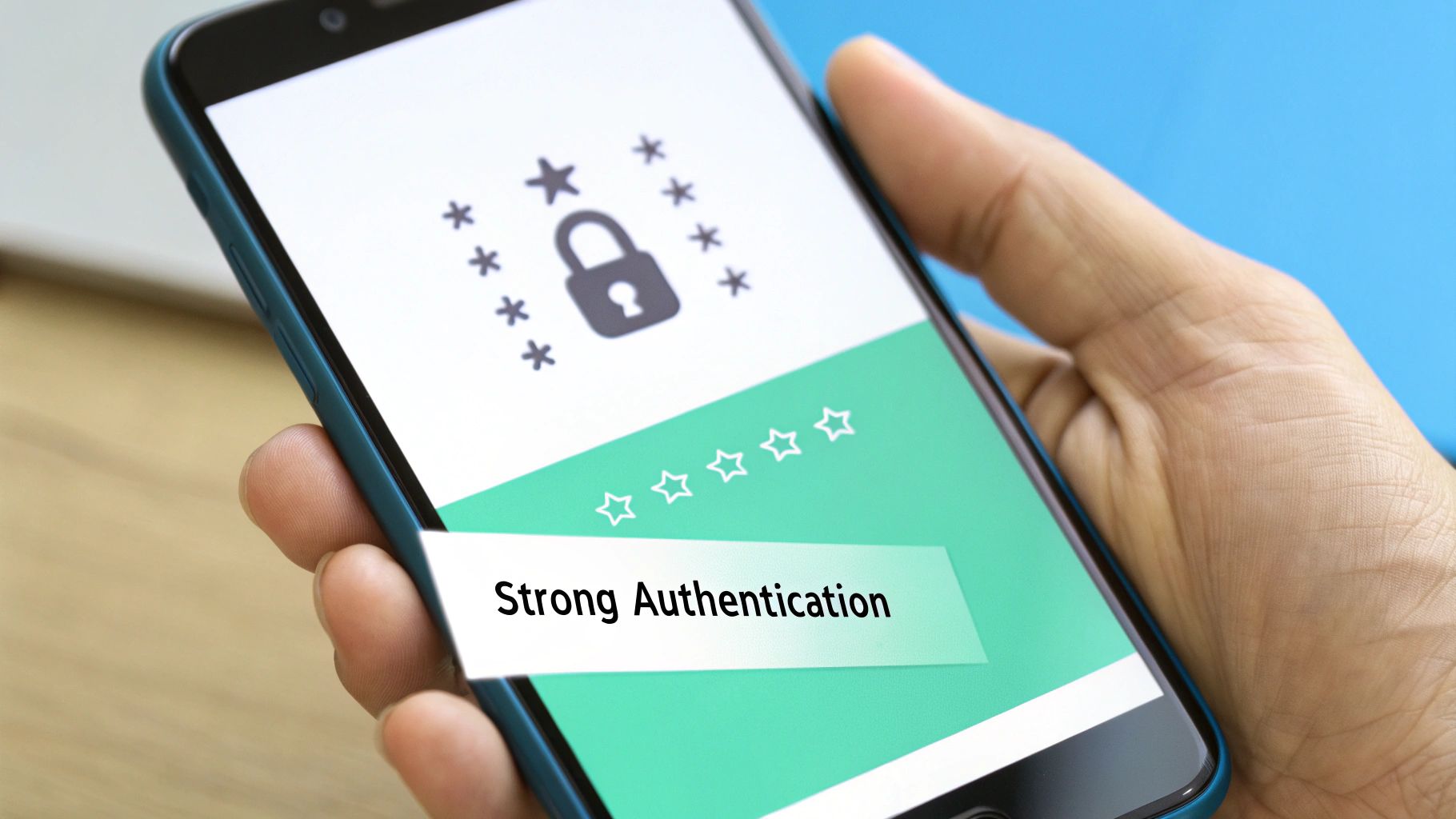
Actionable Implementation Steps
To effectively strengthen authentication, especially for an integrated ecosystem like Sitecore or SharePoint, a layered approach is essential.
- Enforce Strong Password Policies: Configure the ASP.NET Core Identity provider used by Sitecore Identity to require a minimum of 12 characters, including a mix of uppercase, lowercase, numbers, and symbols. Disable password reuse policies.
- Integrate Multi-Factor Authentication (MFA): Connect Sitecore Identity with an external identity provider like Azure AD that has MFA policies enabled. This adds a crucial security layer for all administrative users. For public-facing sites, use TOTP authenticators like Google Authenticator over less secure SMS-based methods.
- Implement Rate Limiting: Protect your login forms from brute-force attacks by implementing rate limiting and account lockout policies. After 3-5 failed attempts, temporarily lock the account or require a CAPTCHA.
- Use Secure Password Hashing: Ensure passwords are never stored in plain text. Sitecore Identity uses modern, secure hashing algorithms by default, but always verify that your solution employs a strong, salted hashing function like Argon2 or bcrypt.
- Monitor for Credential Stuffing: Utilize security tools to monitor login attempts for patterns indicative of credential stuffing, where attackers use stolen credentials from other breaches. Integrate with services like Have I Been Pwned to check for compromised passwords.
4. Web Application Firewall (WAF) Implementation
A Web Application Firewall (WAF) is a critical layer of defense that monitors, filters, and blocks malicious HTTP/S traffic directed at your website. Unlike a traditional network firewall, a WAF operates at the application layer (Layer 7), enabling it to understand and protect against common web exploits such as SQL injection, cross-site scripting (XSS), and file inclusion vulnerabilities. This makes it an essential component of any robust website security best practices strategy, acting as a shield between your application and potential attackers on the internet.
For complex platforms like Sitecore, which manage vast amounts of business-critical data and personalized user experiences, a WAF is indispensable. It provides a first line of defense against automated bots and targeted attacks aimed at compromising the Content Management or Content Delivery environments. Solutions like Azure WAF integrate seamlessly with Azure Application Gateway, offering managed rule sets like the OWASP Core Rule Set to protect Sitecore instances hosted in the cloud.

Actionable Implementation Steps
Deploying a WAF effectively requires careful configuration and ongoing management to maximize protection without disrupting legitimate user traffic.
- Start in Detection Mode: Initially, run the WAF in "Detection" or "Logging-only" mode. This allows you to monitor its activity and identify legitimate requests that might be incorrectly flagged as malicious (false positives) before you start blocking traffic.
- Leverage Managed Rule Sets: Begin with a pre-configured rule set, such as the OWASP ModSecurity Core Rule Set. These rules are designed to protect against the most common web vulnerabilities and provide a strong security baseline.
- Customize Rules for Your Application: Fine-tune the WAF policies to fit your specific application's needs. This includes whitelisting trusted IP addresses or creating custom rules to protect specific Sitecore or SharePoint functionalities, such as administrative login pages like
/sitecore/login. - Implement Rate Limiting: Configure rate limiting to protect against brute-force login attempts and denial-of-service (DoS) attacks on your application's API endpoints and forms.
- Integrate and Monitor Logs: Forward your WAF logs to a Security Information and Event Management (SIEM) system. This provides a unified view of security events, allowing for more comprehensive threat analysis and faster incident response. For a deeper dive into this topic, you can learn more about key security features for content delivery.
5. Input Validation and Output Encoding
A cornerstone of modern website security best practices involves rigorously treating all user-supplied data as untrusted. Input validation and output encoding are the two critical processes that enforce this principle. Input validation ensures that data submitted through forms or APIs conforms to expected formats, types, and lengths before it is processed by the application. Output encoding, conversely, neutralizes data before it is rendered back to the user's browser, preventing it from being executed as malicious code.
These practices are the primary defense against injection attacks. For platforms like Sitecore and SharePoint, which feature extensive user-generated content, forms, and administrative inputs, failing to validate and encode can expose the system to severe vulnerabilities like Cross-Site Scripting (XSS) and SQL injection. An XSS vulnerability in a Sitecore form could allow an attacker to steal session cookies from other users, including administrators.
Actionable Implementation Steps
Effectively implementing these controls within an enterprise DXP requires a defense-in-depth strategy that combines framework features with custom coding standards.
- Server-Side Validation is Mandatory: Never trust client-side validation, as it can be easily bypassed. Always re-validate all input on the server. For Sitecore Forms, leverage custom validation attributes to enforce strict server-side rules on data type, length, and format.
- Use Parameterized Queries: Avoid dynamic SQL string concatenation at all costs. Use parameterized queries or an Object-Relational Mapper (ORM) like the one in Sitecore's data access layer. This ensures user input is treated as data, not as part of an executable command.
- Implement Whitelisting: When validating input, use a "whitelist" or "allow-list" approach. This means defining exactly what is acceptable (e.g., only alphanumeric characters) rather than trying to filter out a constantly evolving list of malicious characters (blacklisting).
- Apply Context-Specific Encoding: Data must be encoded differently depending on where it will be displayed. Use dedicated libraries like the Microsoft Anti-XSS Library or built-in Razor encoding (
@Model.Value) to correctly encode output for HTML, HTML attributes, JavaScript, and CSS contexts. - Leverage Content Security Policy (CSP): Implement a strict CSP header as a second line of defense. This browser-level control can block inline scripts and other untrusted sources, mitigating the impact of any XSS vulnerability that might have been missed.
6. Regular Security Audits and Vulnerability Scanning
Conducting regular security audits and vulnerability scanning is a proactive pillar of any robust website security best practices framework. This process involves systematically evaluating your website, infrastructure, and code for security weaknesses using automated tools, manual penetration testing, and thorough code reviews. The goal is to identify and remediate vulnerabilities before malicious actors can discover and exploit them, ensuring a continuous cycle of security improvement.
For enterprise platforms like Sitecore, which manage vast amounts of user data and power complex business logic, this practice is non-negotiable. A missed vulnerability in a custom module or an outdated third-party integration can lead to significant data breaches. Proactive scanning helps maintain compliance with standards like PCI DSS, which is critical for Sitecore Commerce implementations, and upholds the integrity of your digital experience platform.
Actionable Implementation Steps
A comprehensive auditing strategy requires a blend of automated and manual techniques to effectively secure your digital ecosystem.
- Integrate Automated Scanning: Embed security scanning tools directly into your CI/CD pipeline. For Sitecore solutions, this means using tools like Snyk or OWASP ZAP to automatically scan custom code and third-party dependencies for vulnerabilities with every build.
- Schedule Penetration Testing: Engage security professionals for quarterly or biannual penetration tests, especially for your critical Sitecore Content Delivery and identity servers. These tests simulate real-world attacks to uncover complex vulnerabilities that automated tools might miss.
- Prioritize and Remediate: Use the Common Vulnerability Scoring System (CVSS) to prioritize findings based on severity and exploitability. Establish a clear process for tracking and remediating identified issues, ensuring high-risk vulnerabilities are addressed immediately.
- Perform Authenticated Scans: Run vulnerability scans from both unauthenticated (public user) and authenticated (logged-in user) perspectives. This helps identify privilege escalation flaws within Sitecore's role-based security model. You can learn more about how these procedures fit into larger frameworks by exploring cybersecurity standards for critical infrastructure.
- Establish a Bug Bounty Program: Consider launching a bug bounty program through platforms like HackerOne or Bugcrowd to leverage the global security research community to find and report vulnerabilities in your Sitecore applications.
7. Secure Database Configuration and Management
Your website’s database is the vault containing your most valuable digital assets, from customer PII to confidential business data. Secure database configuration and management are essential website security best practices designed to protect this data from unauthorized access, corruption, or theft. This involves a layered security approach encompassing access control, encryption, network hardening, and proactive monitoring, forming the last line of defense against a breach.
For platforms like Sitecore, the databases (Core, Master, Web, etc.) are central to all operations. A breach of the xDB, which stores sensitive customer interaction data, could be catastrophic. Properly securing the underlying SQL Server instance is therefore a non-negotiable aspect of a secure digital experience platform architecture.
Actionable Implementation Steps
Securing a database environment for a platform like Sitecore requires meticulous attention to detail at multiple levels.
- Apply the Principle of Least Privilege: Create dedicated SQL Server login accounts for each Sitecore role (CM, CD, xDB). Grant these accounts only the minimum permissions necessary for their function, avoiding the use of the
saaccount for application connections. - Encrypt Data at Rest and in Transit: Enable Transparent Data Encryption (TDE) on your SQL Server to encrypt data files at rest. For data in transit, configure Sitecore connection strings to enforce encrypted connections by adding
Encrypt=true;. - Harden the Network Environment: Never expose your database server directly to the internet. Place it in a private subnet, accessible only from your application servers via a strictly configured firewall or network security group.
- Automate Backups and Test Recovery: Utilize Azure SQL or SQL Server Agent to schedule regular, automated backups. Store these backups in an encrypted, geographically separate location and periodically test the restoration process to ensure data integrity and availability.
- Change Default Credentials: Immediately change all default administrative passwords and disable or remove any default or sample databases upon provisioning a new server to close common attack vectors.
8. Implement Security Headers
Implementing security headers is a critical, low-effort, high-impact website security best practice that hardens your application against common client-side attacks. These HTTP response headers act as a security policy, instructing the user's browser to enable its built-in defense mechanisms. This provides an essential layer of protection against vulnerabilities like cross-site scripting (XSS), clickjacking, and code injection, significantly reducing the website's attack surface.
For enterprise platforms like Sitecore, which manage complex user interactions and sensitive data, security headers are a non-negotiable component of a defense-in-depth strategy. Properly configured headers can prevent attackers from loading your site in a malicious iframe (clickjacking) to trick users into performing unintended actions within the Sitecore Experience Editor or a front-end form. This protects both your brand's integrity and your users' data with minimal overhead.
Actionable Implementation Steps
To effectively deploy security headers, especially within a Sitecore or SharePoint environment, you should configure them at the web server level for global enforcement.
- Establish a Baseline: Begin by implementing foundational headers. Configure
X-Frame-Options: SAMEORIGINto prevent clickjacking andX-Content-Type-Options: nosniffto stop browsers from MIME-sniffing a response away from the declared content type. - Deploy Content Security Policy (CSP): Implement a
Content-Security-Policyheader to control which resources (scripts, images, etc.) are allowed to load. Start inreport-onlymode to identify and whitelist legitimate resources without breaking functionality, especially important for Sitecore's Experience Editor. - Enforce Referrer and Permissions Policies: Set a
Referrer-Policylikestrict-origin-when-cross-originto enhance user privacy by controlling how much referrer information is sent. Use thePermissions-Policyheader to disable browser features your site doesn't need, such as the microphone or camera, further reducing potential attack vectors. - Validate Your Configuration: Use tools like Security Headers to scan your site and assess your implementation. Aim for an 'A' grade by methodically adding and refining headers based on the scanner's recommendations.
9. Secure File Upload and Management
File upload functionality is a common attack vector that can expose enterprise platforms to severe vulnerabilities like remote code execution or stored cross-site scripting (XSS). Implementing secure file upload and management is one of the most critical website security best practices, as it prevents attackers from introducing malicious scripts, executables, or other harmful files onto your server. Without stringent controls, a simple image upload feature can become a backdoor for compromising the entire system.
For platforms like Sitecore, where the Media Library is central to content management, securing this functionality is paramount. Attackers could upload a malicious file disguised as a standard image, which, if executed, could compromise the Content Management server and potentially spread to Content Delivery instances. Proper validation, scanning, and storage protocols are essential to mitigate this risk and maintain the integrity of the digital experience.
Actionable Implementation Steps
A defense-in-depth strategy is necessary to secure file handling within a DXP like Sitecore or a collaboration platform like SharePoint.
- Validate by Content, Not Extension: Never trust the file extension (
.jpg,.pdf). Instead, validate the file's "magic numbers" (the first few bytes of its content) to confirm its true MIME type. This prevents an attacker from uploading a.phpshell script renamed toimage.jpg. - Whitelist Allowed File Types: Maintain a strict whitelist of permissible file types and extensions (e.g.,
jpeg,png,docx). Reject any file that does not match this list, rather than trying to blacklist dangerous types. - Scan Files for Malware: Integrate an antivirus scanner into your upload pipeline. For Sitecore, custom processors can be added to the
<uiUpload>pipeline to scan files upon upload before they are saved to the Media Library. - Isolate and Secure Storage: Store uploaded files outside the webroot. Better yet, use a dedicated, secure blob storage service like Azure Blob Storage, a common practice in modern Sitecore XM Cloud architectures. This practice prevents direct execution of uploaded files via a URL.
- Enforce Strict Access Controls: Ensure that only authenticated and authorized users can upload files. Implement rate limiting on upload endpoints to prevent denial-of-service attacks.
- Serve Content Securely: Serve user-uploaded content from a separate, cookie-less domain or subdomain. This mitigates the risk of XSS attacks stealing session cookies. Additionally, set the
Content-Disposition: attachmentheader to prompt users to download files rather than executing them in the browser.
10. Comprehensive Logging, Monitoring, and Incident Response
Effective website security best practices extend beyond prevention to include detection and response. Comprehensive logging and monitoring involve systematically collecting, analyzing, and acting upon security events in real-time. This creates an audit trail of all activities, from user logins and administrative changes to application errors, enabling the rapid detection of anomalies and potential attacks. A robust logging strategy is the foundation for forensic analysis and a swift, coordinated incident response.
For a DXP like Sitecore, which logs extensive diagnostic and user interaction data, this practice is critical. Failing to properly configure and monitor logs from Sitecore, IIS, and the underlying OS can lead to delayed breach detection. Proactive monitoring transforms raw log data into actionable security intelligence, ensuring you can identify and mitigate threats before they cause significant damage.
Actionable Implementation Steps
To build a resilient security posture, you must integrate logging and monitoring with a formal incident response plan.
- Centralize Log Collection: Use a Security Information and Event Management (SIEM) system like Azure Sentinel or a centralized logging platform like the ELK Stack. Configure Sitecore and underlying systems like IIS and SQL Server to forward all relevant logs to this central location for unified analysis.
- Define Critical Events: Identify and configure automated alerts for high-priority security events. This includes multiple failed login attempts from a single IP, unauthorized access to the Sitecore admin interface (
/sitecore), or unexpected privilege escalations. - Establish an Incident Response Plan: Create a formal, documented plan that outlines specific roles, responsibilities, and communication protocols. Follow established frameworks like the NIST Computer Security Incident Handling Guide (SP 800-61) to structure your response phases.
- Protect Log Integrity: Secure log files against tampering by enforcing strict file permissions and access controls. Ensure logs are stored on separate, hardened servers to prevent attackers from covering their tracks.
- Conduct Regular Drills: Periodically test your incident response plan with tabletop exercises and simulated security incidents. This practice ensures your team is prepared and can execute the plan efficiently under pressure.
Website Security Best Practices Comparison
Partnering for Proactive Security
Navigating the complexities of modern digital security requires more than just a checklist; it demands a fundamental shift towards a proactive and continuous security culture. Throughout this guide, we've detailed ten critical website security best practices, moving from foundational elements like HTTPS encryption and regular patch management to more advanced strategies such as implementing a Web Application Firewall (WAF) and conducting comprehensive security audits. Each practice, from enforcing strong authentication policies to securing file uploads and establishing robust incident response plans, represents a vital layer in a multi-faceted defense strategy.
For enterprise platforms like Sitecore and SharePoint, these layers are not independent silos. They are interconnected components of a holistic security architecture. The effectiveness of your input validation, for example, directly impacts the security of your database, while comprehensive logging is essential for a swift and effective incident response. Mastering these practices means understanding how they work in concert to protect your digital ecosystem.
From Checklist to Culture: The Path Forward
The true measure of security isn't achieving a perfect score on a one-time audit but embedding security into the DNA of your digital operations. This ongoing commitment is what transforms a reactive security posture into a resilient, proactive one. For organizations leveraging powerful platforms like Sitecore, this means not just applying patches but understanding the security implications of every customization, integration, and content update.
Your actionable next steps should focus on creating a sustainable security program:
- Prioritize and Implement: Review the ten best practices discussed and create a prioritized roadmap. Start with high-impact, low-effort items like implementing security headers, while planning for more resource-intensive projects like regular vulnerability scanning.
- Educate and Empower: Security is a shared responsibility. Ensure your development, content, and marketing teams understand their role in maintaining a secure environment, especially within complex ecosystems like SharePoint where user permissions are granular and critical.
- Establish a Rhythm: Schedule regular activities such as security audits, patch reviews, and access control assessments. This turns best practices from a one-off project into a repeatable, ingrained process.
Ultimately, a robust security framework does more than prevent breaches; it builds trust, protects your brand's reputation, and enables your business to innovate with confidence. By embracing these website security best practices, you are not just erecting defenses, you are building a secure foundation for future growth and digital excellence. This commitment ensures that as your digital presence evolves, your security capabilities evolve with it, ready to meet the challenges of tomorrow's threat landscape.
Ready to transform your security approach from a checklist to a core business advantage? The experts at Kogifi specialize in architecting, implementing, and managing secure, high-performance Sitecore and SharePoint solutions. Contact Kogifi today to build a resilient security strategy that protects your digital assets and empowers your enterprise.

















